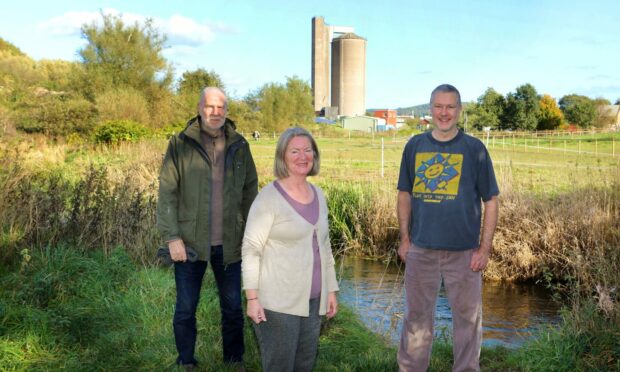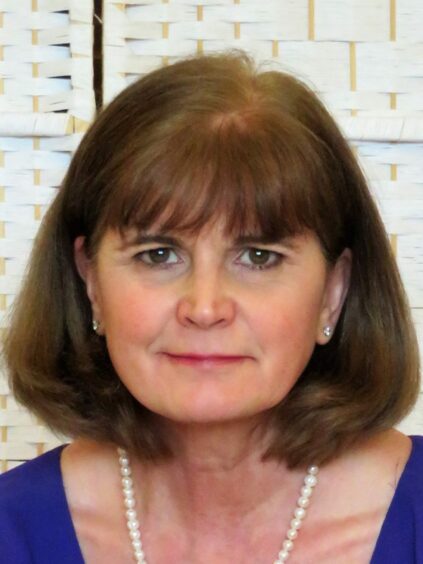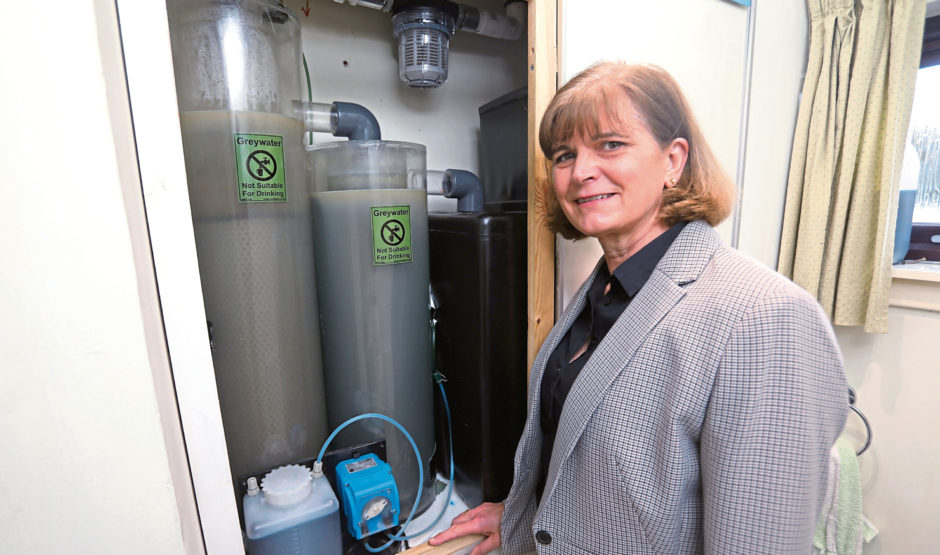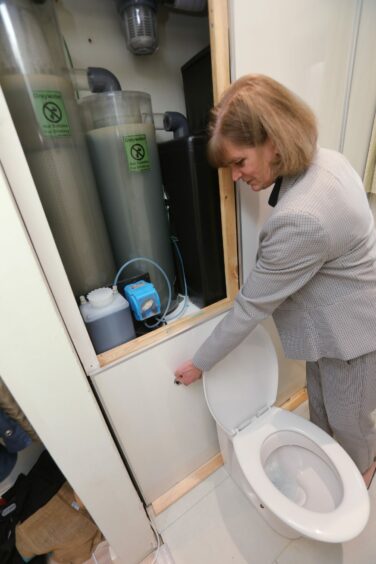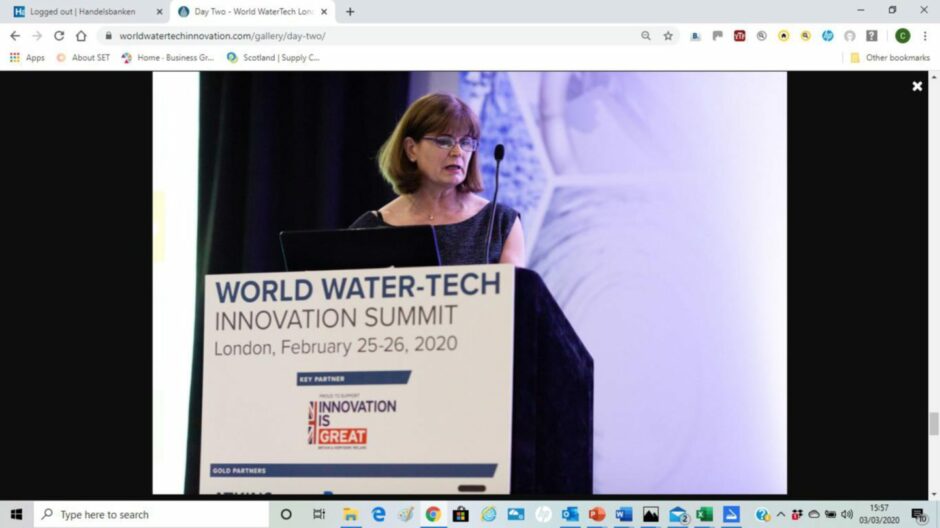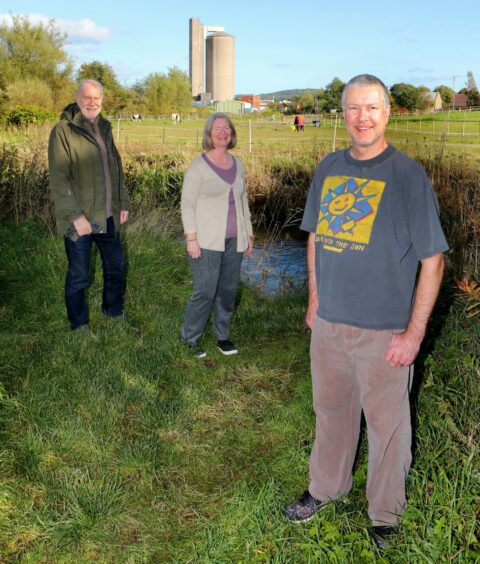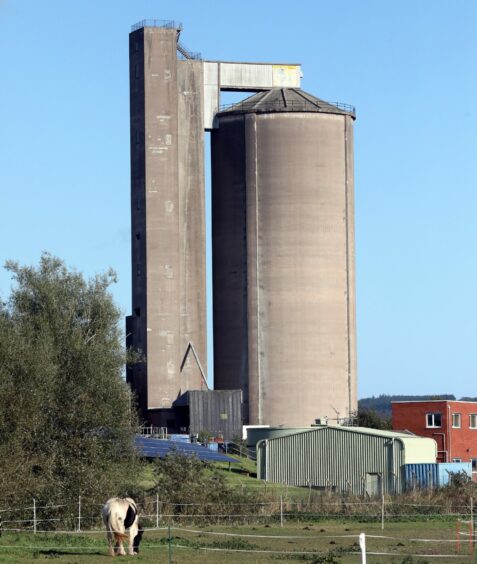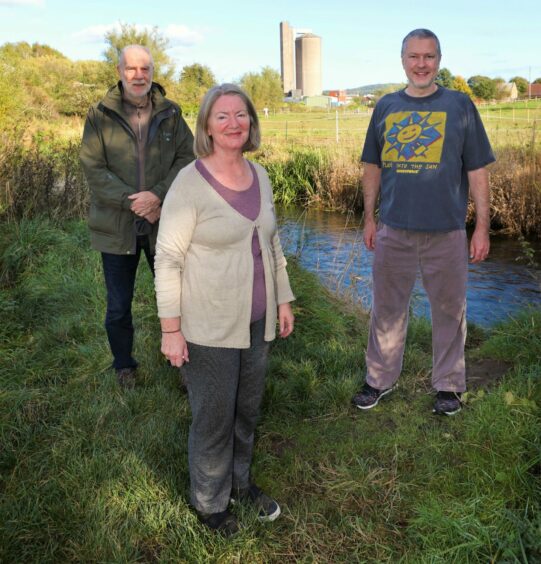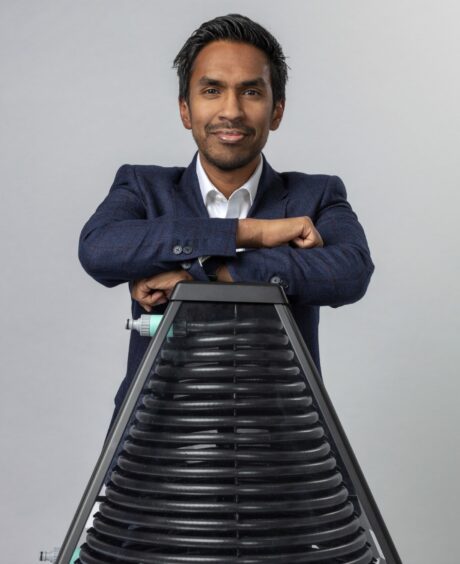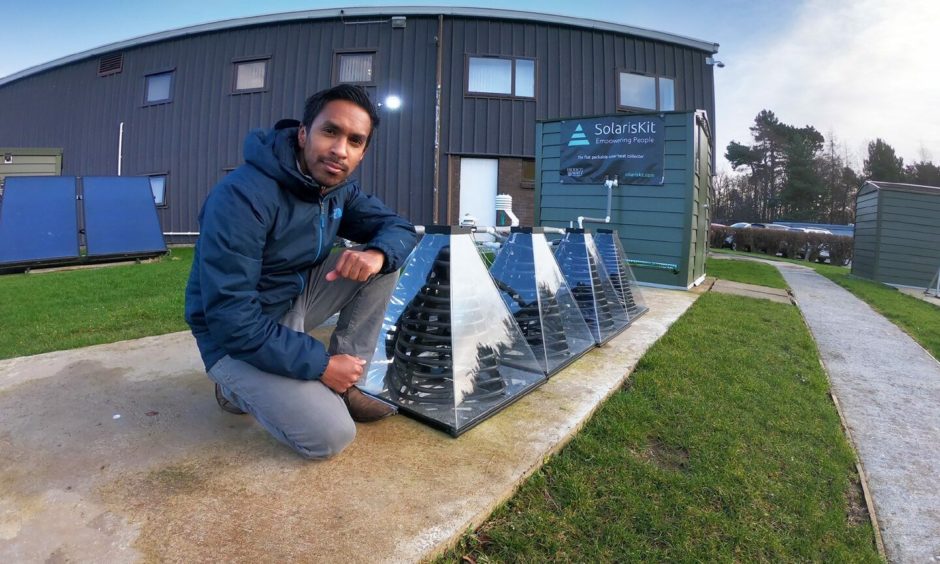With COP26 described as the world’s “best last chance” to get runaway climate change under control, Michael Alexander speaks to several Tayside and Fife organisations pursuing visions of a sustainable future.
It’s six years since world nations came together to sign the Paris Agreement, throwing down the gauntlet for a world of warming ‘well below two degrees Celcius’ compared to pre-industrial times, and below 1.5C if possible.
Amid fresh warnings that the world is not on track to meet these targets, COP26 has been described as the world’s “best last chance” to get runaway climate change under control.
Despite the gloomy warnings, however, many Tayside and Fife businesses and community groups continue pursuing their vision of a sustainable future.
CAROLYN HOGG
It was the long hot summer of 1976 that sowed the seeds of Angus entrepreneur Carolyn Hogg’s passion for saving water.
As a 14-year-old pupil at Dundee High School, she remembers watching John Noakes and other members of the Blue Peter team give water saving tips on TV during the drought.
However, it was some years later, when her own teenagers were prone to taking “long hot 17 minute showers” that she was struck by how much water and energy was being wasted.
“I began to realise that saving water was not just a good idea but a global necessity,” says Carolyn, a former Scottish athletics champion who retired from Arbroath High School in April.
“Water is a key resource and due to the effects of climate change, water supply is being severely affected. Rainfall has changed with too much, too little and/or in the wrong place.
“But processing water and sewage is also responsible for 8% of global greenhouse gas emissions.
“It takes significant amounts of energy for water companies to supply water and remove sewage to and from our cities, towns and villages.”
Business idea
Carolyn’s fate was sealed in 2009 when, as a divorced single parent of four boys, she met inventor and engineer Peter Holdsworth who was working on developing domestic grey water reuse systems.
Today, the couple run Arbroath-based Cascade Water Products which has created Aqua Gratis – a system which processes waste water from showers and baths which it then utilises to flush toilets.
The small size of the Aqua Gratis means that it can be fitted into a domestic property and removes the need to use drinking water to flush the toilet, saving more than 30% of water in the average home.
With Britain ‘showering away’ more than 2,000,000,000 litres of fresh water each day, Cascade has received funding from Scottish Enterprise, EU Horizon 2020 Phase 1, Scottish Edge and Innovate UK and are working with Thames Water, Barratts and The Duchy of Cornwall.
The company recently pitched to the Green Infrastructure Department New York City, and is developing close relationships with international developers operating in South America, Africa and Europe.
However, looking ahead to COP26, Carolyn believes more “transparency” is needed about the impact the water industry has as an energy-consuming sector.
With the water crisis growing, many countries are now turning to energy intensive desalination to provide water.
However, this takes energy away from the population, affecting energy security, affordability and sustainability.
The problem is only going to get worse, driven by the rising demand for water through population growth, migration, climate change and ageing water infrastructure.
“The water industry is a very peculiar beast,” she says.
“Water companies are in the business of selling water, so why would they want to reduce domestic water consumption?
“Because of SDG6 (one of 17 Sustainable Development Goals established by the United Nations General Assembly in 2015), the regulators are saying water companies have a responsibility to get domestic water consumption down.
“In the UK, this means they are happy advising things like don’t run the tap brushing your teeth, make sure you have a full dishwasher, have your water butt in the garden – all these little things that make a very small difference. More can be found on the Waterwise website.
“But they also need to endorse what we are doing because it reduces domestic water consumption by 30%.
“Obviously that reduces water bills. But funnily enough there is a benefit for them because they save money in the long run. It’s about trying to get them to understand that in their drive for net zero, we do actually need to adopt water re-use.”
GORDON PAY
Someone else who thinks the significance of COP26 can’t be overstated is Sustainable Cupar chairman Gordon Pay.
Back in the 1990s, the former Taybridgehead Fife councillor was involved with Fife Council’s sustainability working group set up after the Rio Earth Summit of 1992.
It was “absolutely clear” then that urgent climate action was needed.
“If we’d taken action then we wouldn’t be in the mess we’re in now,” says the now 54-year-old father of one, who unsuccessfully tried to establish a North East Fife community windfarm company, following a Danish community model, in the 1990s.
However, as chairman of Sustainable Cupar – a community group set up in 2009 to help Cupar become a “thriving, environmentally friendly town” – Gordon and his fellow volunteers haven’t given up hope of establishing a zero carbon district heating system that could “put Cupar on the map, not simply at a UK level, but worldwide”.
“District heating can be very similar to the way you may already do central heating in your home,” says Gordon.
“Instead of gas coming into your home in a pipe, you have hot water coming into your home in a pipe. This can then use a very similar piece of equipment to a gas combi boiler, except without needing the gas boiler part.
“We call all the pipes that carry the hot water a “heat network”, and this is a name that sometimes may be used instead of district heating.
“But the Cupar proposal aims to take steps beyond that to address almost the whole challenge.
“At its simplest, we cover the roofs of new homes with what, even in Scotland, is becoming the cheapest way to generate electricity – solar PV – and with some clever engineering, that’s already been well proven, heat the homes in the winter with that.
“There would be no more gas price shocks for the people in these homes, and it could even be a significant help up on a wider scale.”
Overseas examples
Gordon points out that district heating is “normal practice” elsewhere, with 64% of Danish homes getting their heat from district heating. It also works well in Finland and at Drake’s Landing – one of the coldest parts of Canada.
The long standing idea put forward by Sustainable Cupar is that the proposed major housing development at Cupar North should be the “bridgehead” to test the system.
A heat network could be developed siphoning heat from Scottish Water‘s waste water treatment works in the town and using the tower at the former Beet Factory to house a vertical thermal store.
However, despite the economic, scientific and technological arguments being well developed, Gordon says the only problem that’s so far prevented it happening is “the politics”.
He says it’s “up to Fife Council to push for district heating”. But at the moment, he adds, the developer, which describes its own plans as “sustainable”, is “not looking terribly keen on it”.
“It’s about achieving zero carbon, sooner rather than later, shielding people from surging fossil fuel prices, and keeping money, that we currently send away to remote energy companies, in our community,” adds Gordon.
“It’s about using a heat resource that already flows from our homes, heat pumps that are already familiar from your fridge, adding the magic of photovoltaic panels, and just using the ground as a great big storage heater.
“That can essentially heat your home through the winter, from the sun in the summer – at a competitive price.
“The real benefit of a larger heat pump supplying a heat network is not just that it can be more cost effective than heat pumps individually for each home, but that we can add large, long term thermal storage on a network.
“Having that between variations in renewable electricity, and variations in demand for home heating, is a radical advance.”
DR FAISAL GHANI
As a chartered mechanical engineer with over 15 years of experience in developing solar technology, Dr Faisal Ghani is passionate about clean energy and doing whatever it takes to make it accessible to everyone.
It was while working as an academic at Heriot Watt University in Edinburgh 2.5 years ago, however, that the now Dundee-based Australian established SolarisKit – the world’s first flat-packable solar thermal collector.
“What I was trying to do with the company is develop a new way to unlock the potential of solar energy with a really strong focus on developing and emerging economies,” says Faisal, 39.
“It all really started when I read this paper that households in Kigali, Rwanda, were forced to spend up to 40% of their income on paying energy bills, 70% of which was going to just heating water.
“It made no sense to me that a really sunny African country wasn’t utilising its abundant solar resource to meet this heating need, and if it did it would obviously improve the quality of life potentially for millions of people and at the same time lower carbon emissions and reduce the burden on meeting the demand.”
Faisal said solutions to convert sunlight into heat have been around for a long time. However, they tend to be quite expensive, complicated to manufacture and difficult to transport – barriers that prevent wide scale adoption.
‘Ikea solution’
The flat packable self-assembly SolarisKit is being positioned as “the Ikea solution to solar hot water”, and can even be transported by bicycle.
Encouraged by the Scottish Enterprise High Growth Ventures programme, they moved from Edinburgh to the Michelin Scotland Innovation Parc in Dundee at the start of this year to set up a manufacturing line, and hope to recruit at least three people to assemble the kits.
After a few delays caused by Brexit and the pandemic, they’ve secured their first distribution partner in South Africa that’s triggered a sale of 400.
Nat West have just bought a whole pallet of the new systems for a community project in India, and they are looking at more sales in Europe as well.
With around 50% of the world’s energy consumed to meet heating needs, and three quarters of that still coming from fossil fuels, there’s undoubtedly still huge environmental issues to be faced.
When he looks ahead to COP26, however, he is “quietly optimistic” while at the same time “realistic” about what can be achieved.
Hopes for COP26
“The reason why I have any degree of optimism for COP26 is because it’s in Glasgow, in Scotland,” he says.
“That’s probably the best thing about COP26 and I say that because Scotland is such a progressive country. It has a very strong environmental mission, which is great.
“But it’s going to be tough. I’ve spoken to a lot of people who are directly involved in COP26.
“I would have to say the general feeling is quite pessimistic, just because of all the chaos we are currently facing at the moment with the pandemic, all the challenges from Brexit, energy prices going through the roof.
“I think that’s going to make a lot of countries say ‘look we can’t transition away from fossil fuels too quickly because if we do, this is what’s going to happen. Gas prices are just going to go through the roof. It’s not very sustainable’.
“But at the same time, there will be progress.
“I don’t think anything drastic will occur. I’m trying to keep my expectations quite realistic.
“From an engineering and economics perspective, what I would love to happen at COP26 is for the world to say we all agree on a carbon/greenhouse gas tax, and it’s all scaled depending on the economic situation of the country.
“We have to acknowledge the fact that we need to put a price on greenhouse gases that we are producing because if we don’t do that, I don’t think we are going to see the kind of changes that we need.”
